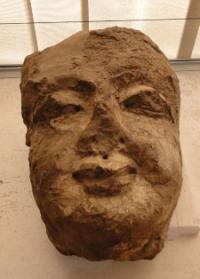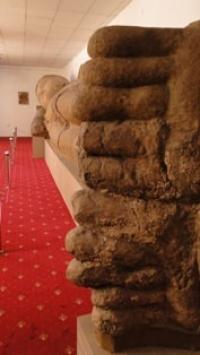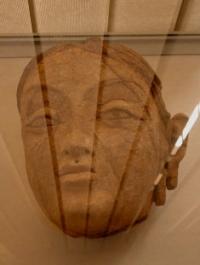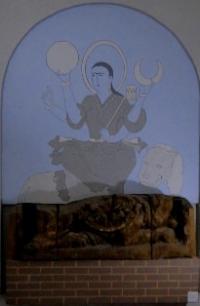You are here
Ajina-teppa - Devil's Hill.




Excursion to Ajina-teppa.
“Technology can be our best friend, and technology can also be the biggest party pooper of our lives. It interrupts our own story, interrupts our ability to have a thought or a daydream, to imagine something wonderful, because we're too busy bridging the walk from the cafeteria back to the office on the cell phone”
Steven Spielberg.
Tajikistan Tours Private Sightseeing Tours around Ajina-teppa.
AJina-teppa ("Devil's Hill", "Witches' Hill", "Evil \Spirit Hill") is the name given by local residents to a high plain, surrounded on three sides by aryk (irrigation ditches), densely buried in shrubbery and covered with shapeless bumps and pits.
When archaeologists came to the hill for the first time in 1959, they concluded, after the initial examination, that this was not just a shapeless conglomeration of land but the remains of some ancient rectangular structure, consisting of two equal-sized squares linked by a bridge.
Restoration scheme of the "Buddha in Nirvana" sculpture In 1961 an archaeological dig began here which continued for several years. More than 1,500 art artefacts were excavated: sculptures, patterns, wall paintings and their fragments.
The level of preservation of these finds varies; some are completely intact and others are in fragments and the historical-artistic value of the latter is relatively modest. When the works were completed it was determined that the Ajina-teppa ruins were the remains of a residential VII - VIIItn century Buddhist monastery.
Buddhism's penetration into Central Asia and the existence of Buddhist monasteries here has been verified by both Chinese and Arabic written sources. Biruni wrote almost 1,000 years ago: "In ancient times in Kho-rasan, Fars, Iran and Mosul, right up to the borders of Syria people were following the Buddhist religion until the time when Zoroaster came from Azerbaijan and began preaching Mazdaism in Balkh".
Some hold the opinion that the history of Buddhism in Central Asia, "should begin with the Greco-Bactrian Kingdom, although information about the teaching of Buddha and maybe some individual followers of Buddhism may have arrived here much earlier, in the Achaemenid era".
Ajina-teppa monastery was 50x100m in area and consisted of two parts (a temple and a monastery), two rectangular courtyards surrounded by buildings and strong walls 2.4m wide. In the centre of each part was a courtyard which led to temples. In one courtyard there was a large structure for keeping relics. It was terrace-like and cross-shaped.
Each of four sides had flights of stairs. The courtyard corners were small structures of the same shape as the large structure. The monastery was richly decorated - the walls and vaults were covered with paintings.
There were alcoves in the walls with large and small sculptures inside. The figure of a Buddha took central place in the sculpture of Ajina-teppa. Large sculptures of a sitting Buddha were placed on the sanctuary dais.
In one corridor, on a low pedestal, was a giant clay figure of Buddha in nirvana laying on his right side (13.5m long). Nirvana, in Buddhist philosophy, is the highest state of mind, an absolute and undisturbed peace.
Following its discovery in 1966, the clay Buddha sculpture finally gained its desired "reincarnation". During the dig only the lower part of the figure - from the waistband to the sole of the foot was almost completely intact.
The upper part of the sculpture had been badly damaged. The other 72 fragments of the sculpture were found separately. In the same year, restorers started the slow work of restoration of the figure and its fragments, and this continued until 1978 when the work was stopped until 2000.
At that time a decision was made to reconstruct the lost part of the figure and assemble the statue into one piece. All the work was successfully completed by September 2001- several months before those sad moments when the Taliban blew up the giant statues of Buddha in Bamian, Afghanistan.
Currently the "Buddha in nirvana" sculpture found in Ajina-teppa is exhibited at the National Museum of Tajikistan's Antiquities in Dushanbe. It is the largest sculpture of Buddha found in present-day Central Asia. It is interesting to note that no images of a standing Buddha were found in Ajina-teppa.
A large variety of Buddha's hair styles were characteristic of Ajina-teppa sculpture. Among sculptures found in Ajina-teppa there are also images of bodhisattvas (Sanskrit: "Enlightening existence").
Compared to figures of Buddha, their small size tells us that the main object of worship was Buddha and that bodhisattvas held a subordinate position, acting as accompanying characters.
Images of demons in the form of a monster with an open mouth and staring eyes, or a mask painted in bright colours with tusks protruding from the corners of the mouth were also found on sculptured fragments in Ajina-teppa.
Perhaps the presence of sculptures and images of such creatures in the monastery was to frighten off opponents of Buddhism. In the interior decorations of the premises there are many human-like and animal-like images: animals (bulls), birds (ducks, pheasants), as well as friezes with various ornamental themes (flowers with oddly-bent petals, geometrical subjects).
Ajina-teppa gives a comprehensive picture of the Buddhist art of Tahoriston, as both paintings and sculptures were found here. Origins of the Tahoriston-Bud-dhist school of art can be found in both India and Bactria.
One could say that Ajina-teppa is an example of the synthesis of Indo-Buddhist and Central Asian cultures and their mutual influence and complementarity. There are now plans to continue research in Ajina-teppa.
This international project will be implemented jointly by UNESCO, the Ministry of Culture, the Institute of History, Archaeology and Ethnography of the Academy of Sciences of Tajikistan and the Japanese Trust Fund for the preservation of world cultural heritage.
Authorship:
Javad Abed Khorasani. http://www.asraresokhan.com
Petrov Alexander
photos.






